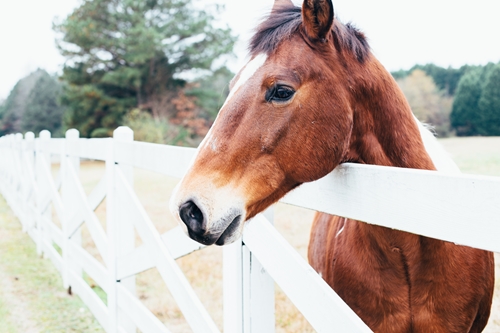Every horse owner knows an animal’s skin is just as important as its speed, muscle development and metabolism. Skin damage or injuries can sink a competition either in terms of appearance or by causing your horse to underperform. Luckily, there are several all-natural horse products that support skin health. Here’s a list of common skin problems horses encounter and how to treat them:
“It’s possible that the torn skin is hiding inner damage.”
Abrasions
If you ever skinned your knee as a child, you know abrasions generally don’t look bad but are incredibly painful. It’s also possible that the torn skin is hiding some inner damage. If your horse falls and skins itself, look for any small, sharp punctures or embedded debris like rocks or twigs. The impact of the fall might be worse than the skidding itself, so look for swelling or bits of broken bone.
Once you’ve finished your inspection, clean the wound and treat it with a disinfectant. Keep your horse from overworking the area as it’ll be sore, stiff and swollen. This will likely mean skipping competitions for the next few weeks. As the abrasion heals, treat it periodically with a salve like Fura-Free to promote healthy skin and keep it clean. Fura-Free has various essential oils like tea tree, thyme and lemon balm to soothe scrapes, burns and minor cuts.
Puncture wounds
Treating a puncture wound depends on its size and depth. Deep wounds or punctures over the joints require immediate veterinary attention – both bring an increased risk of infection, and your vet can administer the right antibiotics. He or she might also take radiographs to evaluate any joint damage.
Flush the wound to clean out bacteria and debris. A sterile solution is the best option, but flushing with water is better than nothing. Make sure you’re pushing debris out of the wound and not farther into it. If the puncture is small and bleeding, apply pressure with clean gauze or towels.
Dandruff
Certain horses, like Arabians and Thoroughbreds, are genetically predisposed to dandruff, Equus Magazine mentioned. Dry dandruff usually collects around the base of the mane or tail, while oily dandruff appears on the elbows, hocks or lower legs. You can manage dandruff with the appropriate shampoo, but it’s best to choose one specifically for horses. Human dandruff shampoo, while effective, is usually too harsh.
“Manage dandruff with regular grooming and horse supplements.”
Unfortunately, there isn’t a cure for dandruff. Instead, you can manage the condition with regular grooming and horse supplements designed to promote healthy skin like Finish Line’s Feet First Coat 2nd. Feet First contains the essential omega-3 fatty acids necessary for skin health.
Rain rot or rain scald
When a horse’s skin and coat are chronically wet, whether due to rain or standing in mud, scabby crusts begin to develop. After a while, the crusts peel to reveal small bare spots and, on occasion, pus. This condition, known as rain rot, is caused by a bacterial infection that spreads quickly when introduced to water. If the bacteria get under the skin, the infection develops. If left untreated, rain rot leaves bald patches.
You can treat rain rot with a disinfectant rinse and antimicrobial shampoo. According to Equus Magazine, picking off loose scabs can help them heal faster. Make sure to keep your horse dry after treatment.
Lice
Itchy areas with abrasions, scabs or hair loss from rubbing are early signs of lice. If you part the horse’s hair, you might see flattened bugs or translucent eggs. In severe cases, untreated lice can lead to anemia. Find a spray, powder or shampoo designed to treat your horse’s particular type of lice. Biting lice feed on blood, while chewing lice eat dead skin cells. Once you’ve found a solution, follow the directions exactly as they are written. Anti-lice products don’t destroy eggs, so they need to be reapplied after the eggs hatch. In addition, clean any equipment and tack that touched the horse while it was infested. Lice lay eggs in these areas as well, and you don’t want to reintroduce the larvae.








